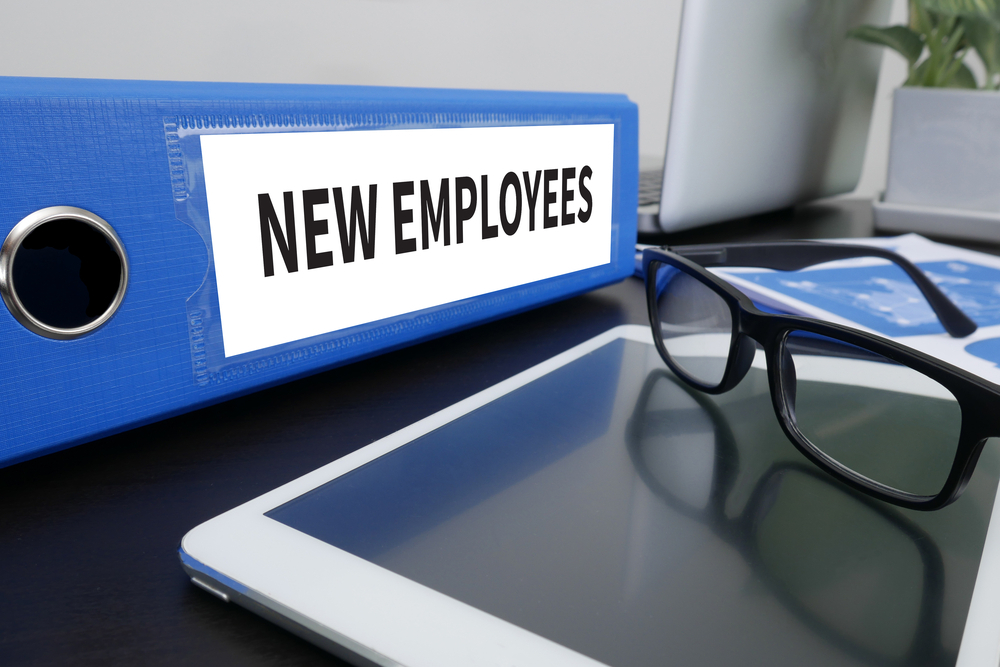How can you make new starters feel welcome - remotely?

Virtual onboarding: how can it be as meaningful and effective with no physical workplace to welcome new employees into? That’s a question your business may ask if the next vacancy you need to fill is a remote one.
Giving new starters a solid introduction and warm welcome has always been crucial. But now with many staff working remotely, it takes on even more meaning. Onboarding isn’t just crucial to help recently-recruited employees feel confident carrying out all aspects of their role. It’s also the time when they learn what their new employer expects from them - and what they can expect in return. Plus, it’s a way to fully engage new hires and make them feel like part of the team they’ve joined.
So how can your business get this right, from a distance? The answer is to adjust your onboarding to reflect the times we’re living through. Let’s look at some key issues to do slightly differently for a virtual workplace.
Stretch out the tour
The traditional first-day tour of the office - stopping off at colleagues’ desks to introduce them to everyone - isn’t an option at the moment. And that might actually be a good thing. Some people can find these whistle-stop tours overwhelming, with no hope of remembering names and job titles and little chance to form a connection.
As new hires still need to connect with their colleagues, schedule a tour of the workplace - just over video. And scheduling individual video meetings - or meetings of small teams - means that rather than cramming all the introductions into one day, they can be spaced out. This will also help people starting their jobs form proper connections and get a deeper understanding of how each colleague fits within the company.
Stagger the checklist, too
Sure, there are plenty of things that a new team member will need to know about the role they’ve taken on and the company they’ve just joined. But piling on the PDFs to read in their first few hours and even days on the job can be overwhelming - particularly as there won’t be anyone there in person to help them with quick query-checks.
The lack of in-person contact may mean that onboarding remotely will take longer than before. So rather than inundating them with all the content all at once, make it clear that they can work their way through essential onboarding documents at a pace that suits them.
Make personal support a priority
Even the most motivated self starter can feel isolated when they work from home. And so with zero chance for face-to-face interaction, it helps for personal connections to be fostered early on. This is something that the remote candidates we recruit through HR GO tell us, especially.
As well as video introductions to different colleagues as we’ve mentioned above, make sure the new employee has a buddy who’s available for them to ask questions to whenever they need it. A workplace buddy can play an important role in helping people get up to speed on how things work - from general queries on the company culture or questions on specific issues. It can really help if this person worked in the physical workplace before the pandemic so can give a fuller picture of what things are like and how things work.
Prioritise the logistics
Ahead of the new arrival’s first day, it’s crucial to iron out any logistical issues so they can hit the ground running. Companies where staff work from home need to ensure digital tools and cloud-based processes can be accessed seamlessly.
So will the new starter have remote access to everything necessary to do their job, such as intranet and company systems? And what - if any - physical IT equipment will they physically need from you as the employer, and can it be installed remotely and safely?
Giving a positive virtual onboarding experience
With a dispersed team there may be more challenges involved in onboarding. But bringing aboard a new employee is still ultimately about making sure the team member has what they need to thrive in their role.
Savvy businesses that are able to create a thorough remote onboarding process in the digital workplace are bound to have stronger, more cohesive teams in the future - whether those teams stay remote or move back to a physical workplace.
Kategorie
Featured insights
A Brighter Future
Win a £200 educational voucher for your school by entering our Brighter Future competition! Click here to find out more details - terms and conditions apply.
Czytaj więcejRecent insights
Don’t make these unforced errors before clicking ‘submit’
Try not to sabotage your chances of reaching the next stage. Read our top tips on how to error check your CV before hitting that submit button.
Read moreWhy you should let Teachright help find you a job
You may think it is easier to find a job yourself – through searching job boards or even contacting schools directly. Of course, this is a perfectly valid method and can be successful for many candidates. But it can be fairly time consuming and you may miss out on a role that could be perfect for you. So why use Teachright? And how will it help you?
Read more